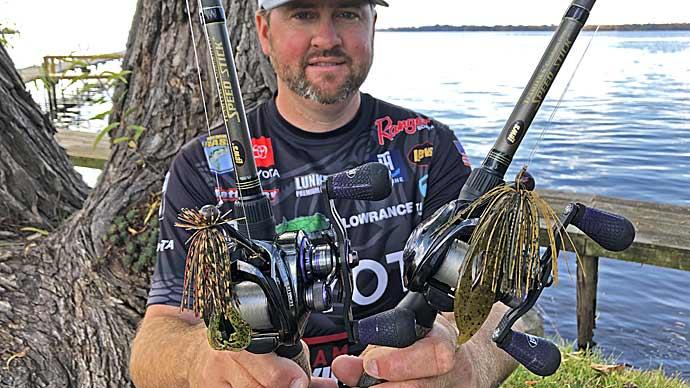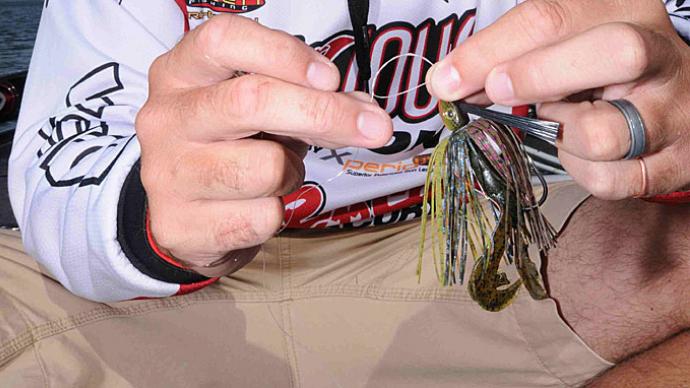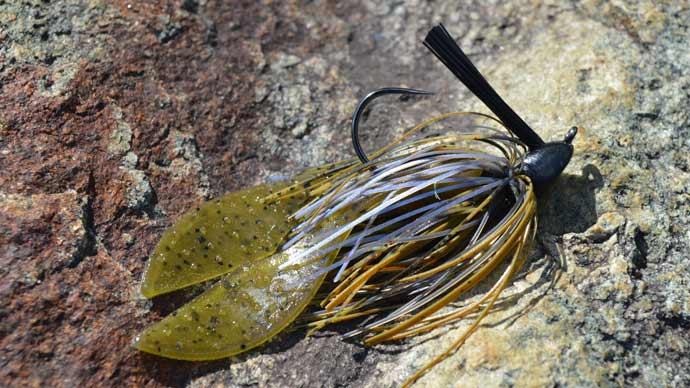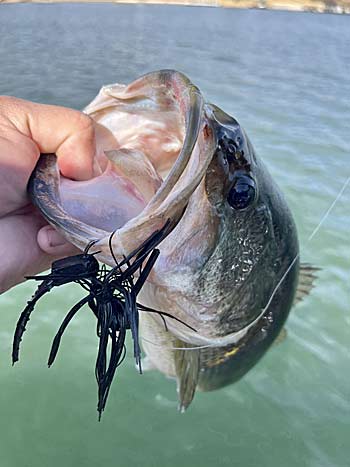
One of the most popular and effective bass fishing lures is a jig: a weighted head molded onto a hook and paired with a silicon or rubber skirt. Many jigs also feature a weed guard, typically fiber strands that help to protect the hook from snags without harming the ability to set the hook when a bass bites. As bass fishing has evolved, jigs have become highly specialized, with different head styles, hook types, and other built-in design features. All bass anglers should have a solid arsenal of jigs covering any situation they see on the water.
No matter what type of jig you tie on, you have a great lure that will imitate some of the favorite forage for bass: crawfish, bluegill, and shad. Here's a rundown of some of the most popular jig styles and what makes each of them different from the others hanging on the shelves at your favorite local tackle shop or on the pages of your favorite online tackle site.
- Casting Jigs
The standard jig style would be the Arky head; it's a standard jig style that has been used for decades and remains unchanged because of how effective it is. These jigs can be pitched to shallow cover like laydowns and docks but can also be cast into deeper water and dragged along the bottom.
These are the go-to jigs for many bass anglers. The most commonly used sizes would be 3/8 and ½-ounce; having a handful of these in colors like green pumpkin and black and blue will cover many different situations. Of course, you can make color as complicated as you'd like to, but something that imitates crawfish and a darker black and blue skirt version for dirtier water will catch fish just about everywhere in all months of the year.
- Football Jigs
Developed for offshore fishing, a football head has a head shape that resembles an actual football. There are several reasons for this design, with the biggest being that the head of the jig will have more surface space on either side of the jig's line tie. This allows for a better feel of what is going on along the bottom, whether rock, shells, or other harder items. They also hang up less than different designs, meaning less frustration with snags.
They are designed to be fished with a dragging-type retrieve, as they are the perfect imitator of a crawfish scurrying along in the rocks. A handful of brown or green skirts with crawfish imitating soft plastics like craws, chunks, and double-tail grubs are a great starting point for fishing football jigs. These jigs come in many size options, including hefty versions weighing up to an ounce, which can be fished in deep water much easier than lighter jigs, but a ½-ounce size is an excellent place to start.
- Flipping Jigs
A flipping jig may be your best option when fishing heavy cover like reeds and cattails or around thick and mangled brush, logs, and timber. In general, they are beefier with bigger and stouter hooks. They also come in heavier sizes designed to plunge through objects easier.
While they are more specialized, they are needed to ensure you are not under-gunned with big bass around thick cover when the right situation arrives. Having a few 3/4- and 1-ounce jigs will be enough to ensure you are ready for fishing the heavy stuff but know that part of the game is losing a few in the gnarly cover they work so well in.
- Finesse Jigs
Image

Finesse jigs are great for fishing around rocks and offering bite-sized fish offerings. A great way to downsize your jig profile and imitate smaller crawfish is with a finesse jig. They are also incredibly effective for smallmouth and spotted bass, but any bass will eat them. Finesse jigs are also great for fishing in colder water when bass are less aggressive.
Most finesse jigs will have a round head design and much lighter weights than the other ones listed in this article, often around ¼-ounce. The skirt material is also typically finer and, most times, cut short near the head of the jig, giving it a flared look that has a great appearance while keeping the profile compact.
- Swim Jigs
Image
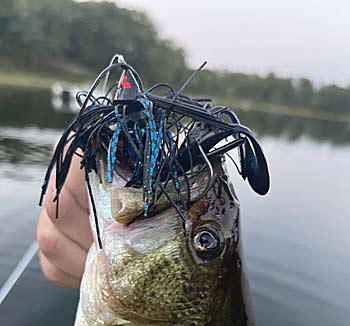
A swim jig's pointed head design helps it swim more freely through underwater objects like aquatic vegetation. Any jig can be moved through the water and "swim," but there are specially designed jigs for fishing this way. They are excellent for fishing around vegetation in the water but will work anywhere with a standard cast-and-retrieve look. They are perfect imitators of bluegill and shad and come in many colors to closely match these baitfish. Experimenting with different soft plastic trailers can alter the jig's action, either slowing it down, speeding it up, or adjusting how high it swims in the water column.
The design of the swim jig typically features a pointed, bullet-like head that comes through the water easily and glides through vegetation better than other jigs. In addition, the line tie is right up front and not offset, allowing a smooth retrieve.
- Hair Jigs
Image
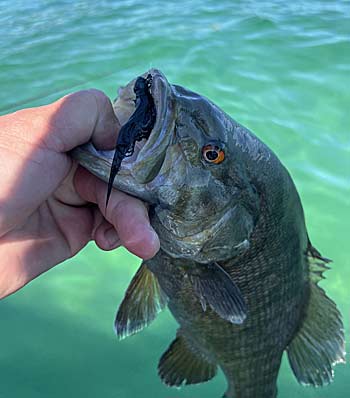
Hair jigs are a little different but catch fish. The final jig in this article is the outlier, as they are made up of hair, synthetic materials, marabou, or bucktail. These jigs also run the gamut for head sizes, from very lightweight marabou jigs that look more like crappie jigs that anglers use to swim for smallmouth in clear water to much bigger jigs. The heavier options can weigh up to an ounce and are often bucktail jigs in white colors that are practical tools for fishing for offshore fish feeding on shad and other baitfish.
The allure of hair jigs is the natural appeal of the hair material. They are specialized jigs but have a place in bass fishing if you want to give fish something different. They may be unique, but sometimes they will outperform other jigs.
Looking at the variety of jigs on the market can be confusing and overwhelming, but knowing more about what makes them different will simplify things. They have been designed for particular fishing situations and are all tools built for the job at hand.


